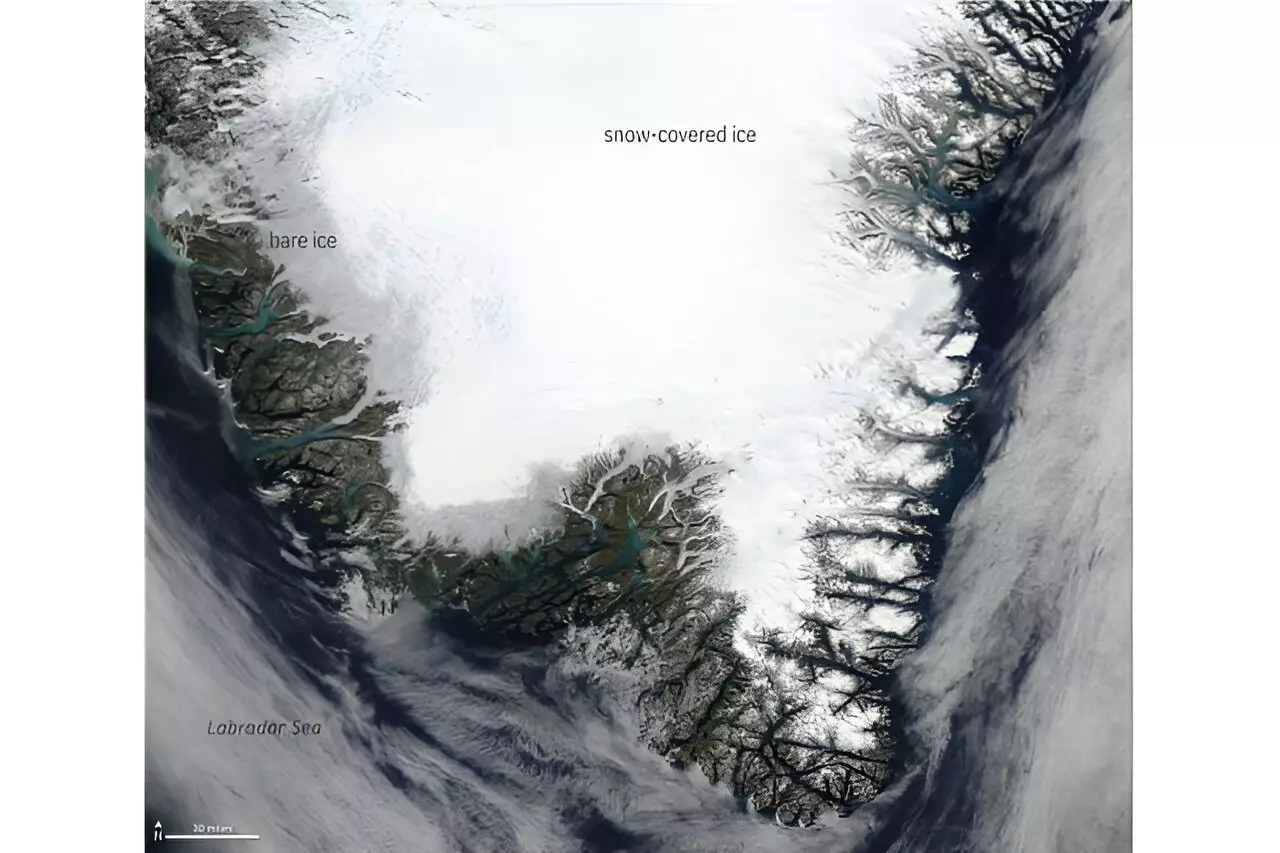Climate change is a pressing issue that continues to impact the planet, with human activities playing a significant role in driving global warming. Accurate computer climate models are essential in predicting how the climate will evolve in the coming years. A recent study published in the Journal of Geophysical Research: Atmospheres highlighted a key discrepancy in a commonly used climate model’s estimation of albedo, a crucial physical property that affects Earth’s climate system.
The study, led by researchers from UC Irvine and the University of Michigan, revealed that the Energy Exascale Earth System Model (E3SM) overestimates the reflectivity of ice, particularly on the Greenland Ice Sheet. This overestimation of albedo, which measures the degree to which ice reflects sunlight, has significant implications for predicting the rate of ice melt and, ultimately, global warming.
One of the key factors contributing to the overestimation of albedo in the E3SM model is the lack of consideration for the microphysical properties of ice in a warming world. Algae and dust, which can darken the surface of snow and ice, making them less reflective, were not adequately accounted for in previous model versions. These microphysical properties play a crucial role in determining the actual reflectivity of ice in a changing climate.
The study’s findings suggest that incorporating more accurate ice reflectivity data into climate models can lead to more precise projections of ice melt rates. By reevaluating the albedo of the Greenland Ice Sheet based on satellite observations, researchers were able to identify a discrepancy that resulted in a higher rate of ice melt than previously estimated. This discrepancy underscores the importance of considering even minor properties that can have far-reaching effects on climate models.
Moving forward, the research team plans to expand their analysis to include other icy regions across the globe to assess the widespread impact of the albedo discrepancy in the E3SM model. By comparing the new ice albedo data with observational data from various regions, researchers aim to improve the accuracy of climate projections related to snow and ice feedback mechanisms. Additionally, the team intends to apply their findings to glaciers in regions like the Andes and Alaska to further refine the model’s predictions.
The study on ice albedo’s impact on climate change models sheds light on the importance of accurately representing microphysical properties in climate simulations. By addressing the overestimation of ice reflectivity in the E3SM model, researchers can enhance the model’s ability to predict the rate of ice melt and, ultimately, the trajectory of global warming. This research serves as a crucial step towards refining climate models and improving our understanding of the complex interactions within Earth’s climate system.


Leave a Reply